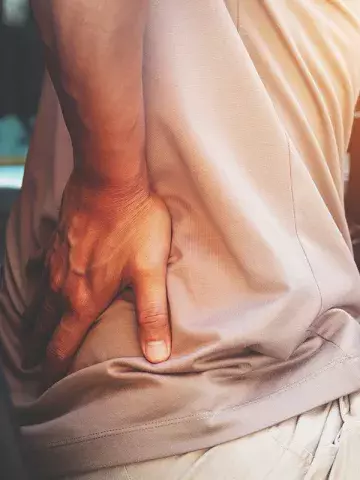Study finds cognitive functional therapy beneficial for chronic back pain
By Melanie Hinze
Cognitive functional therapy (CFT) can result in large and sustained improvements for patients with persistent, disabling low back pain, while also being low risk and low cost, Australian research published in The Lancet suggests.
CFT is a patient-centred approach that enables patients to self-manage their pain by targeting their individual pain-related cognitions, emotions and behaviours that can contribute to pain and disability.
Commenting on the research, Professor Chris Maher, a physiotherapist; founding Director of the Institute for Musculoskeletal Health, Sydney; and Co-Director of Sydney Musculoskeletal Health, said that a frustration when managing chronic, disabling, low back pain was that most treatments provided benefits that were small or temporary, or both.
The RESTORE trial was a randomised, controlled, three-arm, parallel group, phase 3 trial conducted across 20 primary care physiotherapy clinics in Perth and Sydney. It included 492 adults aged 18 years or over with low back pain lasting more than three months with at least moderate pain-related physical activity limitation. Patients were randomised to usual care, CFT or CFT plus movement sensor biofeedback.
The CFT arms involved up to seven treatment sessions with a physiotherapist over 12 weeks, plus a booster session at 26 weeks. CFT comprised three components. The first was to help patients make sense of their pain so that they understood how unhelpful thoughts, emotions and behavioural responses could reinforce their pain, and, equally as important, understand that helpful thoughts, emotions and behaviours were key to their recovery. The second was graded exposure to movements and activities nominated as painful, feared or avoided. The third was lifestyle change coaching to encourage healthy physical activity, sleep and dietary habits, along with stress management and social engagement where needed.
In the CFT and biofeedback group, physiotherapists additionally had access to movement sensor data to use for assessment, movement retraining and providing biofeedback.
Both the CFT and CFT plus biofeedback interventions were more effective than usual care for activity limitation at both 13 and 52 weeks, although there was no additional benefit from adding biofeedback to CFT. Both intervention arms were also more effective than usual care for quality-adjusted life-years and much less costly from a societal perspective.
Professor Maher described RESTORE as a landmark trial ‘because it reported clinically important and durable effects on a range of important health outcomes.’
He said that the treatment was also cost effective, but noted that it was a relatively new treatment and not yet widely available.
‘The next step in this work is for the authors to develop and test methods to train clinicians to competently deliver the CFT intervention,’ he said. ‘At the same time we also need to have conversations with funders for how we fund this treatment.’
Lancet 2023; https://doi.org/10.1016/ S0140-6736(23)00441-5.


